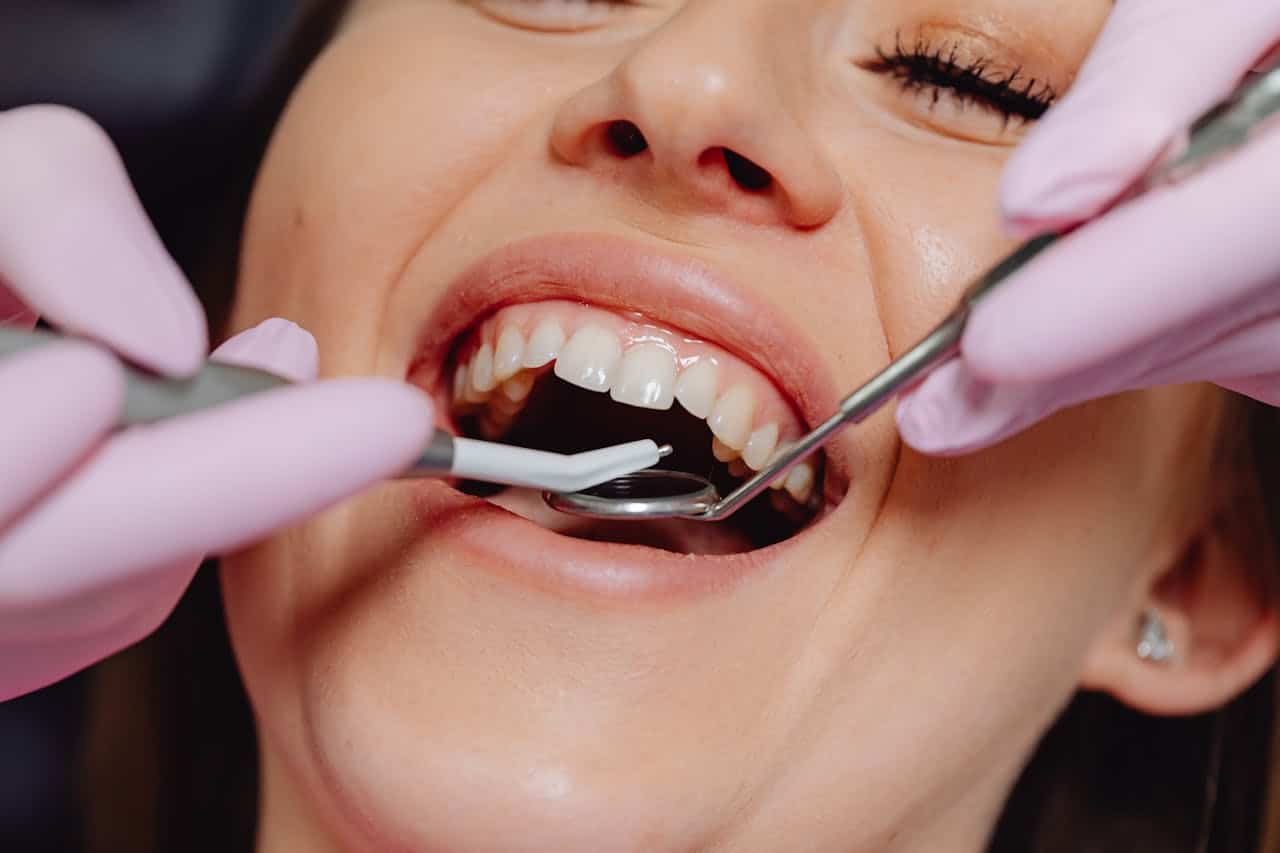Tooth coloured fillings have become a popular choice for those needing cavity treatment. Unlike the old metal fillings, these keep your smile looking natural by blending seamlessly with your teeth’s colour. They’re an excellent option for anyone wanting dental work that doesn’t stand out.
Understanding Tooth Coloured Fillings
Tooth coloured fillings are a modern solution for restoring damaged teeth to their original look and feel. They are crafted from composite resins that mimic the natural hue of your teeth, making them a popular choice for those who want a subtle and aesthetically pleasing option. These fillings can be adjusted to match the specific shade of your teeth, offering a uniform appearance that traditional metal fillings can’t provide.
The materials used in tooth coloured fillings are usually a mix of quartz or glass and plastic resins. This combination not only forms a sturdy filling but also ensures it bonds well with the tooth. The ability to blend materials allows for a precise match, ensuring the filling blends seamlessly into your smile. Compared to amalgam fillings, which are made from a mix of metals such as silver, mercury, and tin, tooth coloured fillings provide a mercury-free alternative that some people prefer for health reasons.
In comparing tooth coloured fillings to traditional amalgam ones, several differences stand out:
– Aesthetics: Tooth coloured fillings are nearly invisible, while metal fillings are typically more noticeable.
– Bonding: Composite fillings bond directly to the tooth, providing support and helping preserve the tooth structure, whereas amalgam does not bond and may require removing more of the actual tooth.
– Safety and Materials: Many patients choose resin for peace of mind, thanks to its mercury-free composition.
Tooth coloured fillings represent an advancement in dental technology that caters to both functional needs and cosmetic desires, making them a great choice for those seeking a discreet dental solution.
Benefits of Tooth Coloured Fillings
Tooth coloured fillings offer numerous benefits, making them a preferred choice for many dentists and patients alike. The primary advantage is their ability to enhance the natural look of teeth. By selecting the exact shade that matches your existing teeth, these fillings ensure a seamless blend, contributing to a confident smile that looks unaltered.
Another significant benefit is their durability. Modern composite materials are designed to withstand the pressures of biting and chewing. They’re highly resilient and can last for many years with proper dental care. This strength makes them comparable to traditional amalgam fillings in terms of functionality and longevity.
Biocompatibility is another consideration that favours tooth coloured fillings. The materials used are safe and less likely to cause adverse reactions in patients. This aspect provides peace of mind for those concerned about the potential risks linked to amalgam fillings, which contain mercury.
Here are some key benefits of choosing tooth coloured fillings:
– Aesthetic Appeal: They blend perfectly with natural teeth, enhancing aesthetics instead of detracting from them.
– Durability: With modern materials, they are durable and support the tooth structure effectively.
– Safety: Free from metals like mercury, they offer a safe alternative for dental restoration.
Choosing tooth coloured fillings provides a practical solution that supports both dental health and appearance, making them a fantastic option for anyone needing fillings.
Procedure for Tooth Coloured Fillings
Getting a tooth coloured filling is a straightforward process designed to be comfortable and efficient. The procedure begins with a thorough examination by your dentist to assess the decay or damage. Once confirmed, the dentist will prepare the area by removing any decayed tissue. This ensures the filling will adhere properly and last longer.
Next, the dentist will clean the cavity, making it ready for the filling. With the area clean and free of debris, the dentist applies the composite resin in layers. Each layer is carefully shaped and then hardened using a special curing light. This process ensures the strength and stability of the filling, keeping it securely in place against daily wear and tear.
During your appointment, you may be numb in the area receiving treatment, which helps with comfort. After the filling is in place, the dentist will polish it to make sure it matches the contours of your natural tooth. Here is a simple outline of what you can expect:
– Examination and cleaning of the affected area.
– Application of composite resin in layers.
– Shaping and curing each layer until it hardens.
– Final polishing to ensure a smooth, natural fit.
Recovery is generally quick, with most patients resuming normal activities soon after. Avoiding hot or cold foods initially can help reduce sensitivity. Over-the-counter pain relief can also manage any mild discomfort as you adjust to your restored tooth.
Maintaining Tooth Coloured Fillings
Maintaining the health and appearance of your tooth coloured fillings requires some attention to dental hygiene and routine care. Regular dental check-ups are crucial to ensure fillings remain intact and effective. During these visits, your dentist can inspect the fillings for any signs of wear or potential issues.
To prolong the life of your fillings, consider these practical tips:
– Brushing and Flossing: Maintain a twice-daily brushing routine and floss regularly to prevent plaque build-up around the fillings.
– Avoid Hard Foods: Limit chewing on hard objects like ice or hard candies, which can damage the fillings.
– Use Mouthguards: If you grind your teeth at night, wear a mouthguard to protect both your fillings and teeth.
Additionally, adopting good oral hygiene practices helps prevent cavities from forming in other teeth. Use fluoride toothpaste, limit sugary snacks, and drink plenty of water to support healthy teeth and gums.
Conclusion
Tooth coloured fillings offer a remarkable way to restore damaged teeth with style and effectiveness. Their natural looking result is particularly appreciated by those who care about keeping their smiles bright and undisturbed. Made from materials that bond directly to the tooth, these fillings are both strong and versatile. Their durability, combined with a seamless match to your natural tooth colour, makes them an attractive choice for dental work.
In addition to looking great, tooth coloured fillings promote healthier smiles by preserving tooth structure and contributing to overall oral health. Routine visits to your dentist ensure that these fillings remain in top condition, while good dental habits help prolong their life.
If you’re exploring options for dental fillings or want to know more about maintaining a healthy smile, reach out to Pickering Dental Services. Our team will guide you through the choices available and offer personalized advice to meet your dental needs. Schedule a dental service in Pickering today to experience the benefits of tooth coloured fillings in enhancing your smile’s beauty and function.


